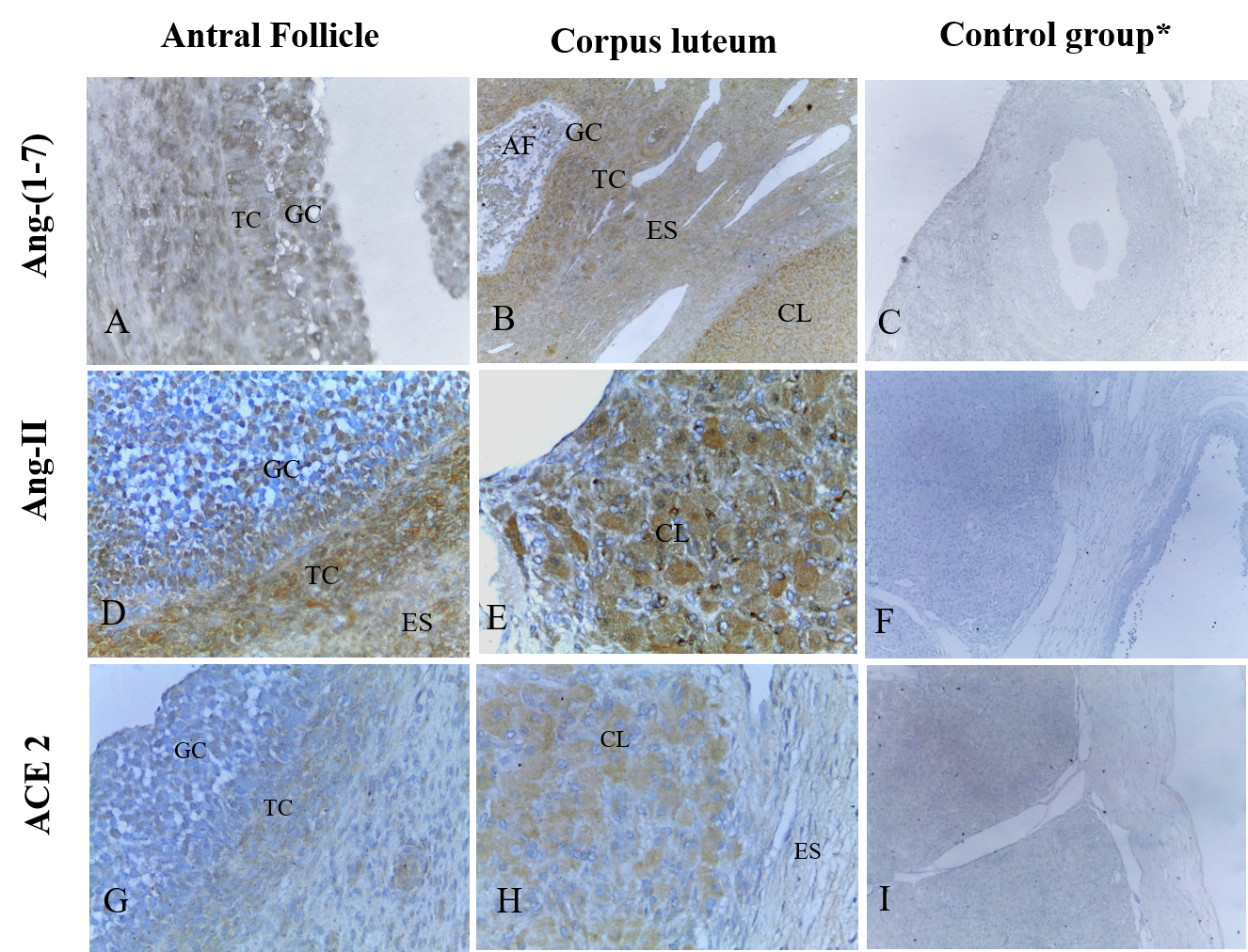Immunolocalization of angiotensin-(1-7), angiotensin II and angiotensin- converting enzyme 2 in goat ovary
DOI:
https://doi.org/10.21708/avb.2021.15.3.9629Resumen
There is increasing evidence as to the participation of the ovarian renin-angiotensin system in important reproductive processes. The inhibition of the angiotensin-converting enzyme (ACE) caused an increase in the rate of ovulation and pregnancy in the artificial insemination protocol has fixed time (TFIA). This study aimed to investigate the presence and location of Ang II, Ang- (1-7) and ACE2 in goat ovaries and the possibility of the involvement of these peptides in previous results. Ten ovaries from goats were collected in a slaughterhouse, washed in buffered PBS, perfused with protease inhibitor solution and processed for immunohistochemistry protocol. The search for peptides was performed using the avidin–biotin–peroxidase method. A strong immunoreactivity for Ang II in theca cells of antral follicles and corpus luteum was observed. Antral follicles (theca cells), corpus luteum and oocyte cytoplasm in early antral follicles exhibited strong immunoreactivity for Ang-(1-7). There was strong immunoreactivity for ACE2 in the cytoplasm of luteal cells and theca cells of antral follicles. In this study, for the first time, the presence and location of Ang II, Ang-(1-7) and ACE2 are reported in goat ovary, suggesting that there is participation in follicular development, oocyte maturation and corpus luteum development.
Descargas

Descargas
Publicado
Número
Sección
Licencia
Autores que publicam na Acta Veterinaria Brasilica concordam com os seguintes termos: a) Autores mantém os direitos autorais e concedem à revista o direito de primeira publicação, com o trabalho simultaneamente licenciado sob a Licença Creative Commons Attribution que permite o compartilhamento do trabalho com reconhecimento da autoria e publicação inicial nesta revista. b) Autores têm autorização para assumir contratos adicionais separadamente, para distribuição não-exclusiva da versão do trabalho publicada nesta revista (ex.: publicar em repositório institucional ou como capítulo de livro), com reconhecimento de autoria e publicação inicial nesta revista. c) Autores têm permissão e são estimulados a publicar e distribuir seu trabalho online (ex.: em repositórios institucionais ou na sua página pessoal) a qualquer ponto antes ou durante o processo editorial, já que isso pode gerar alterações produtivas, bem como aumentar o impacto e a citação do trabalho publicado (Veja O Efeito do Acesso Livre).


 Esta obra está licenciada com uma Licença
Esta obra está licenciada com uma Licença 